Somebody Build This #1 - Shopify for the next generation of creators
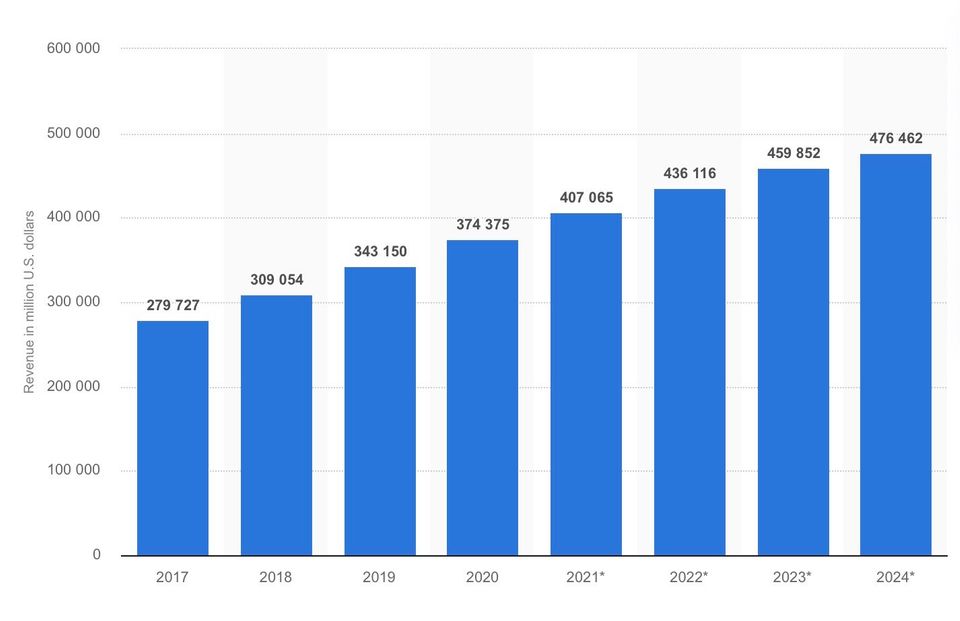
Shopify is one of those special companies that grew from humble beginnings (the backend for a snowboarding startup) to eventually begin to challenge one of the largest companies in the world, Amazon.
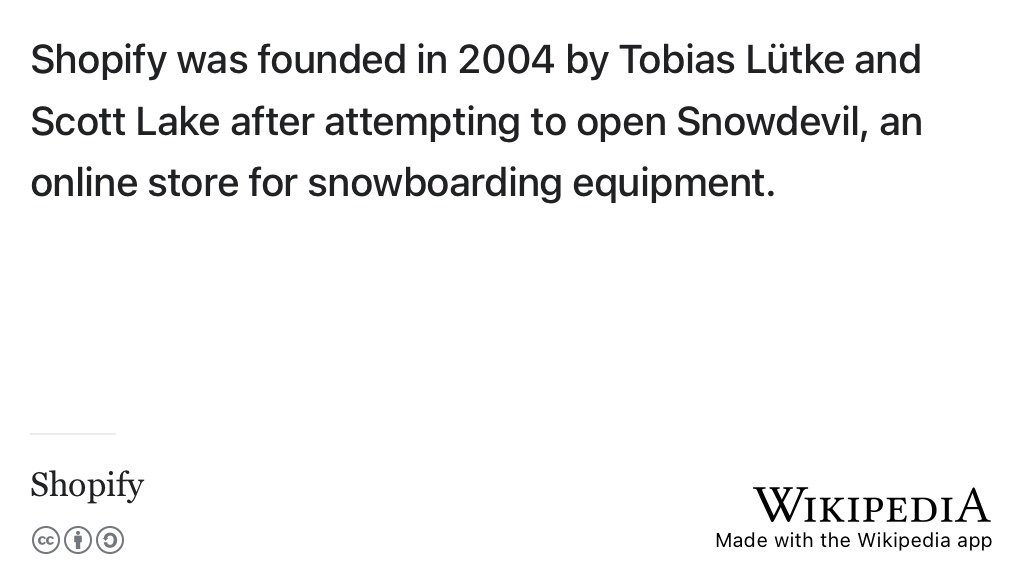
People tend to underestimate the company and I’m going to try not to here.
Shopify is huge, relatively agile and resilient. In Q4 2020, Shopify’s total revenue was $977 million, an increase of nearly $200 million from the previous quarter. The market has caught on, along with a pandemic fueled tech buying frenzy, and the stock has catapulted over the last year.

They are growing – Fast.
The problem is, as Shopify has moved upmarket in an Apple like plan to offer payments, carbon neutrality, fulfillment and more, it has left some creators in the dust.
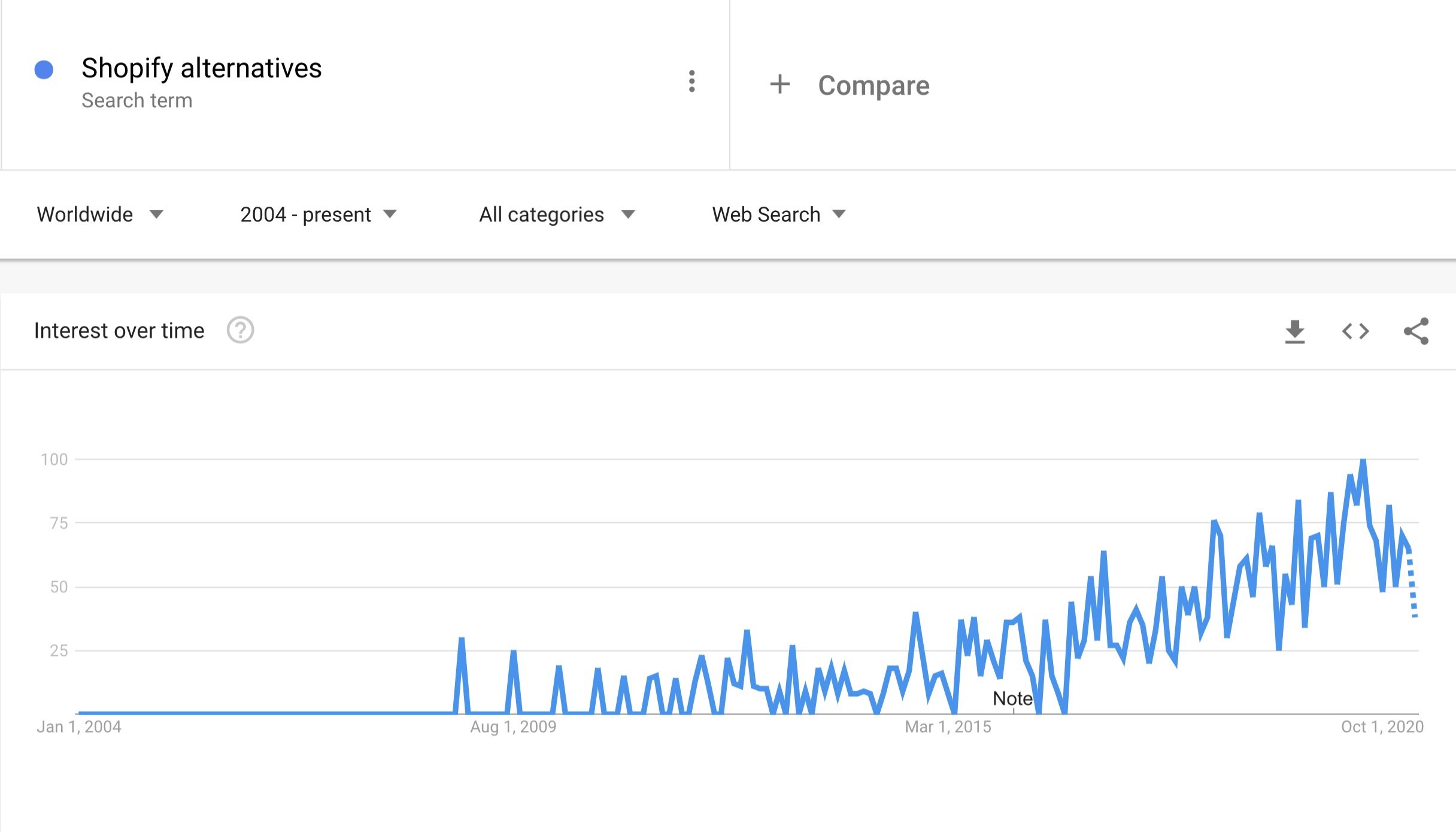
(“Shopify alternatives” courtesy of Google Trends)
So where are the opportunities? Shopify is clearly hoovering up the market. Well, let’s first take a look at the competition.
Existing competitors
Shopify is not without its competitors.
Companies like Universe, Gumroad and Webflow have emerged to fill in the cracks in Shopify’s armor, but none have surfaced yet as the winner.
Universe has an interesting mobile-first (and until recently, mobile only) approach, which counters Shopify’s lack of mobile presence.
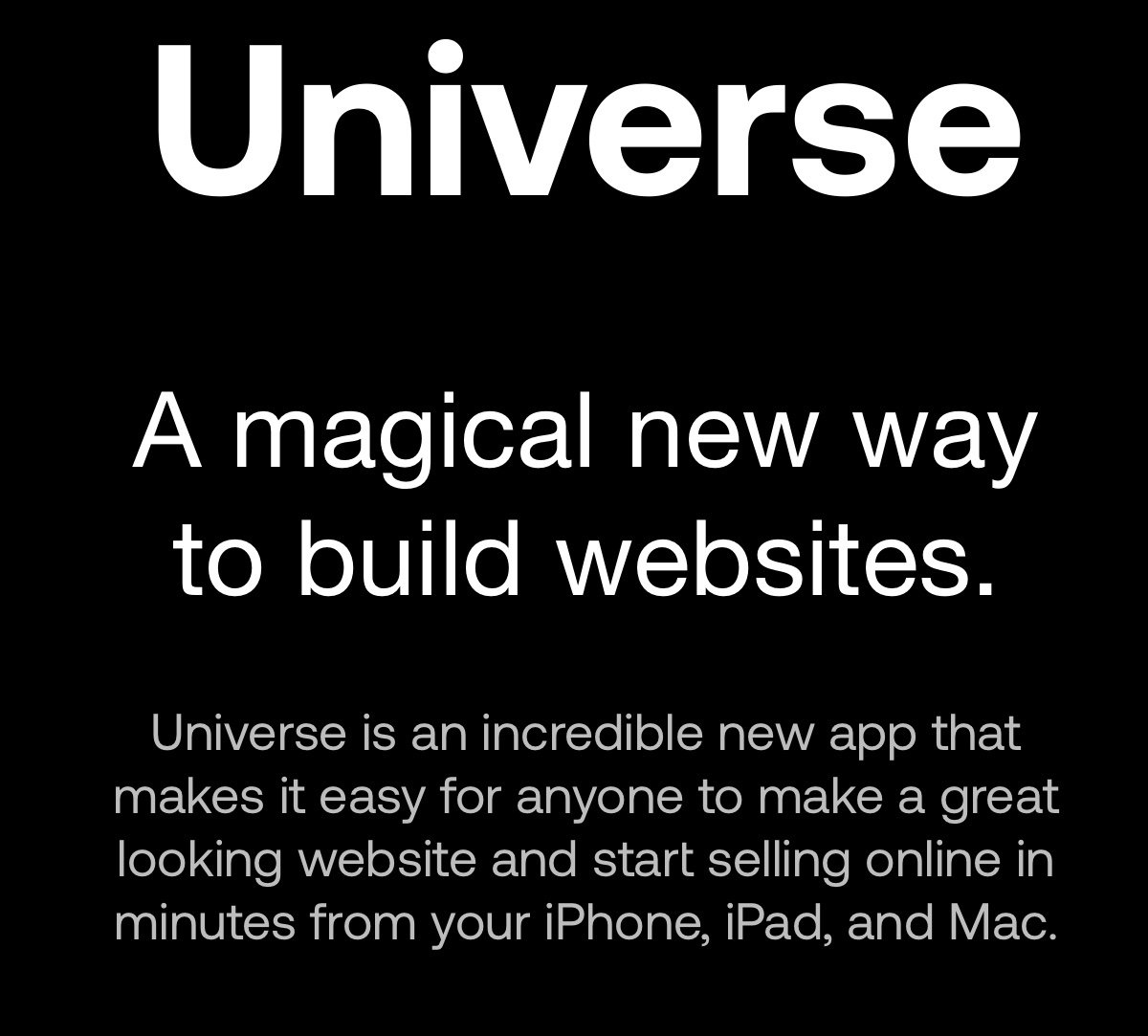
Gumroad is primarily built for single creators and digital products. They have also set the standard for “built in public” companies, including their most recent and somewhat controversial fundraising from individuals.
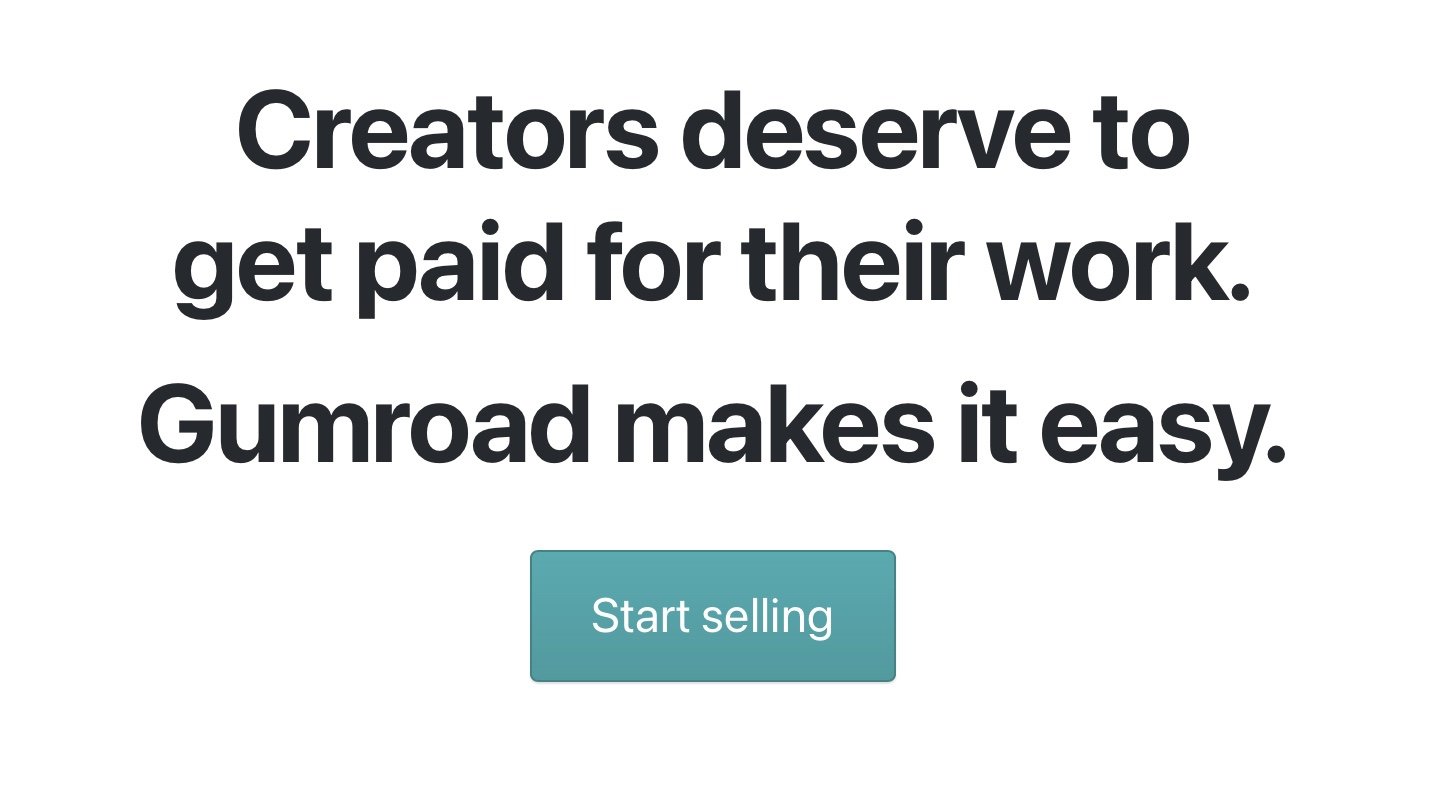
Webflow now has ecommerce options, but they still feel bolted on and a bit clunky, plus if you’re not a designer or dev you’re going to have a tough time.
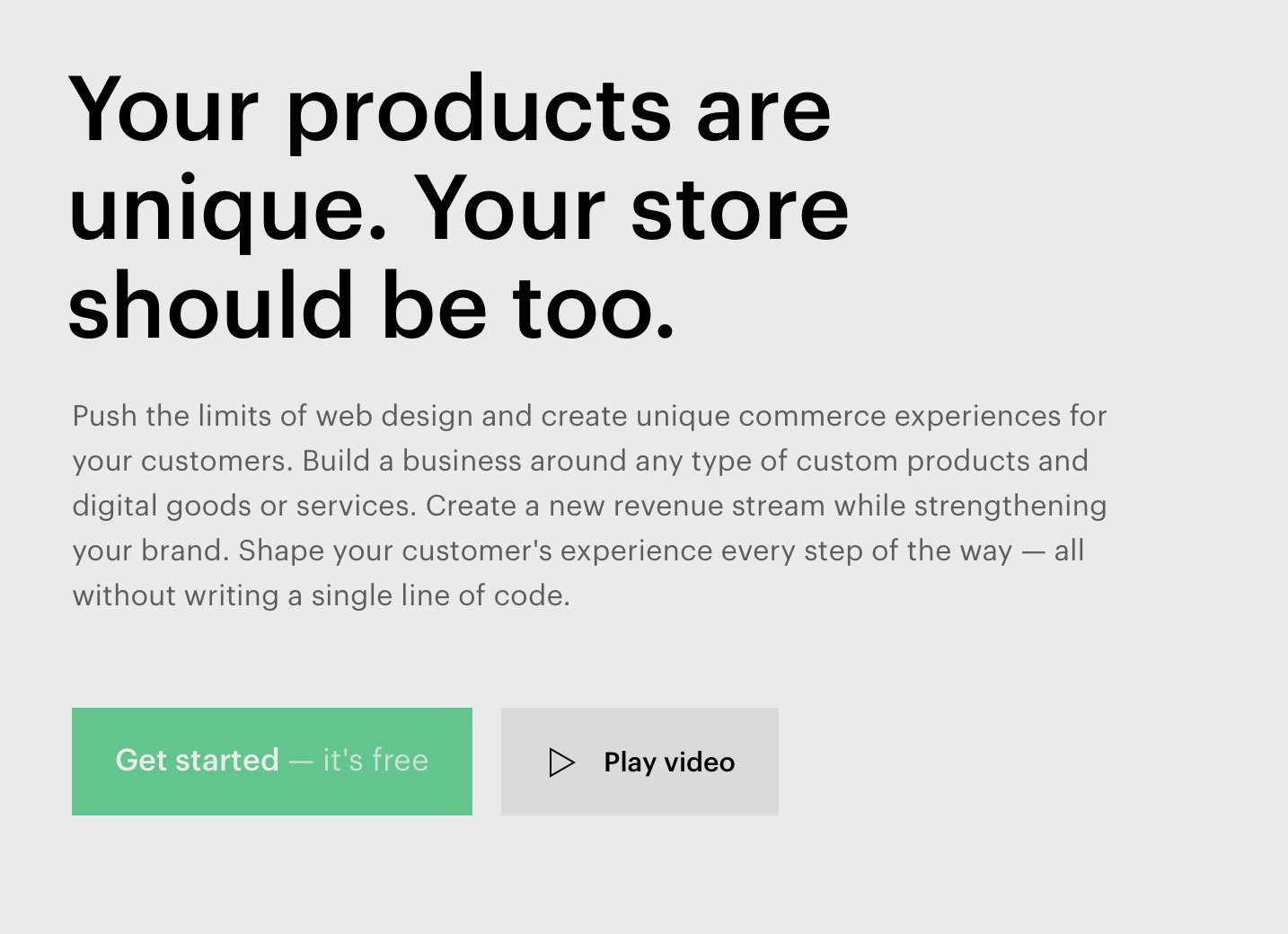
Woocommerce, a popular WordPress plugin with it’s very own ecosystem is still just that – a WordPress plugin.
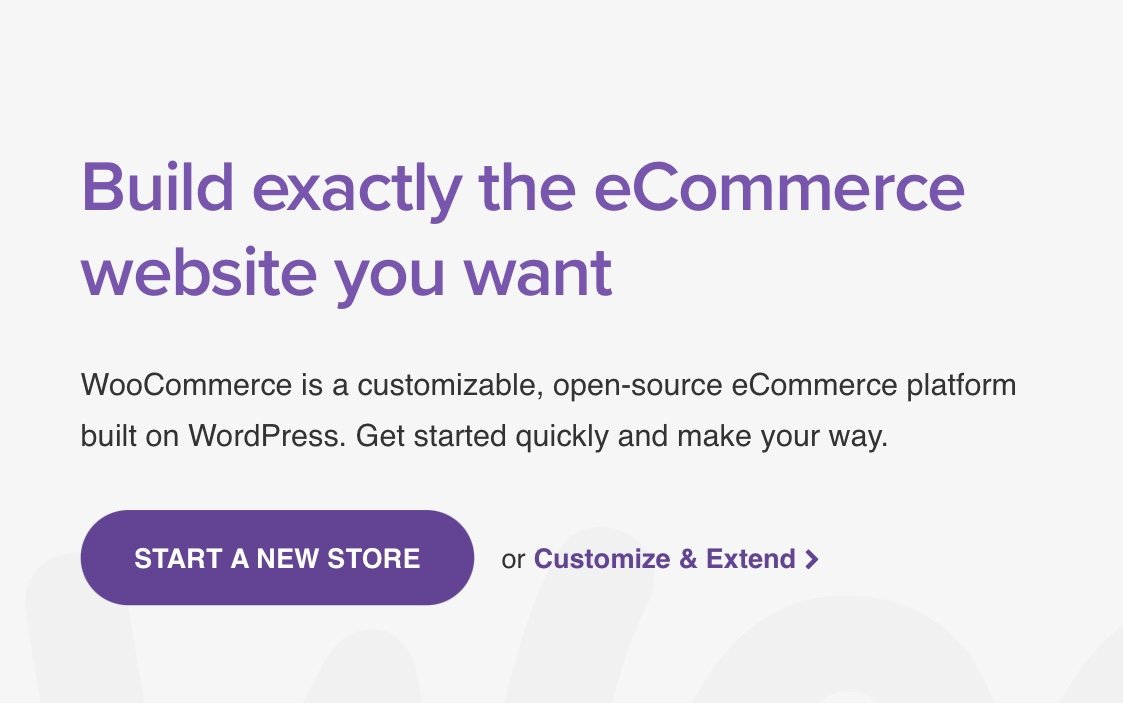
Also you can’t forget Squarespace, Wix, Weebly, whatever Godaddy is doing nowadays, etc. They’re definitely making inroads and I’ll touch on them a bit later.
Then there’s Bigcommerce.
This one is my favorite anti-gen z tool.
If we’re talking about the a younger generation, count how many turnoffs there are on this page.
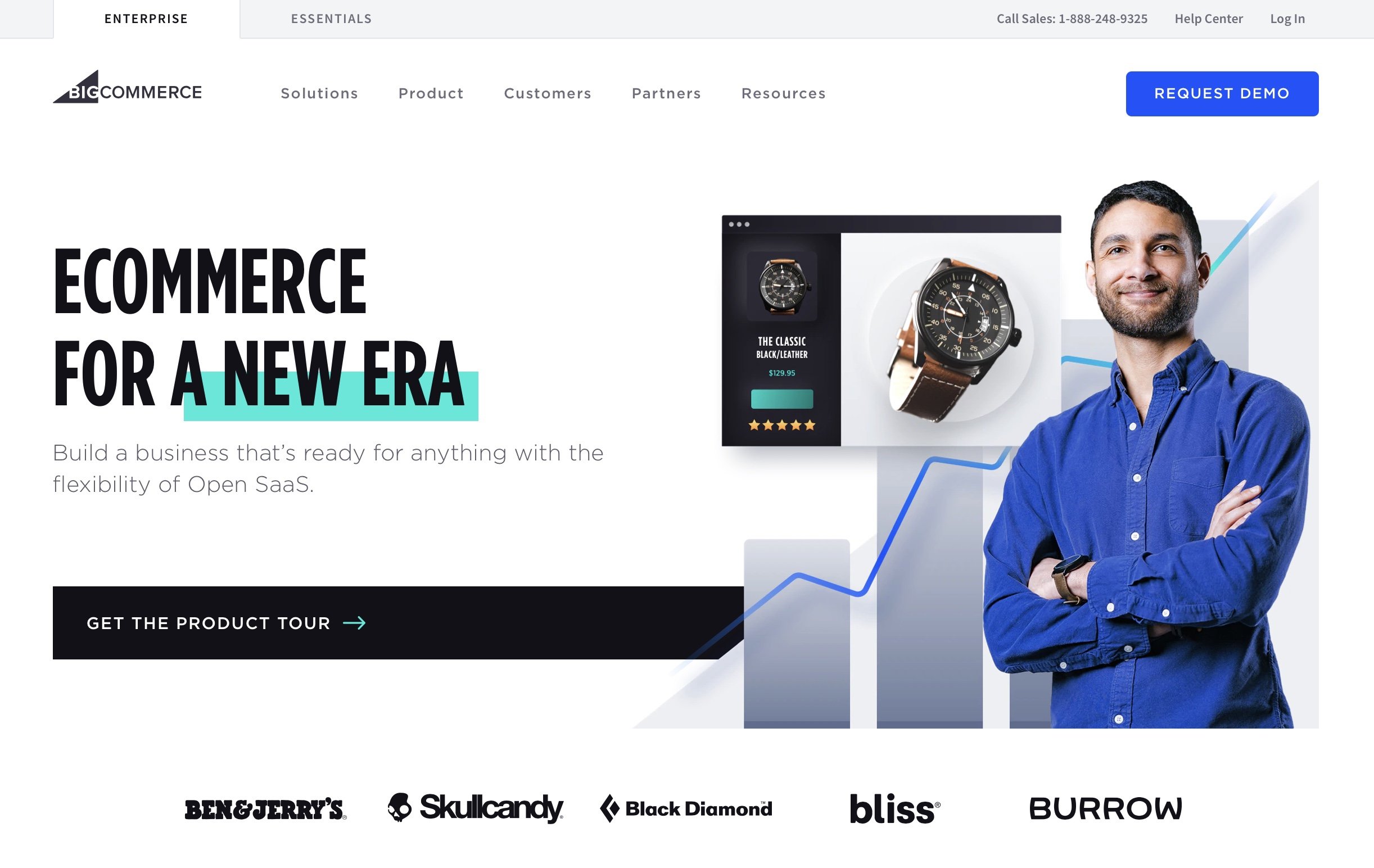
We’ve got a literal stonks meme in the header. Cmon.

Beyond that, we have:
- A giant strange “GET THE PRODUCT TOUR” CTA
- Skullcandy (really?) as a featured client
- Huge “request a demo” button top right
- A default tabbed layout (??) set to “Enterprise”
- And finally, the kiss of death, a phone number prominently featured to call the sales team.
Now, Bigcommerce is doing fine, with a reported total ARR of 167 million in 2020, and their demo is clearly not anyone that doesn’t already have a supporting team.
But that’s why this is such an exciting opportunity and such an interesting space to be in.
The Market
E-commerce of physical goods is a massive TAM (projected to reach 476.5 billion in 2024 and that number is pre-covid) and the opportunity to help the next generation create and sell their goods has never been more open.
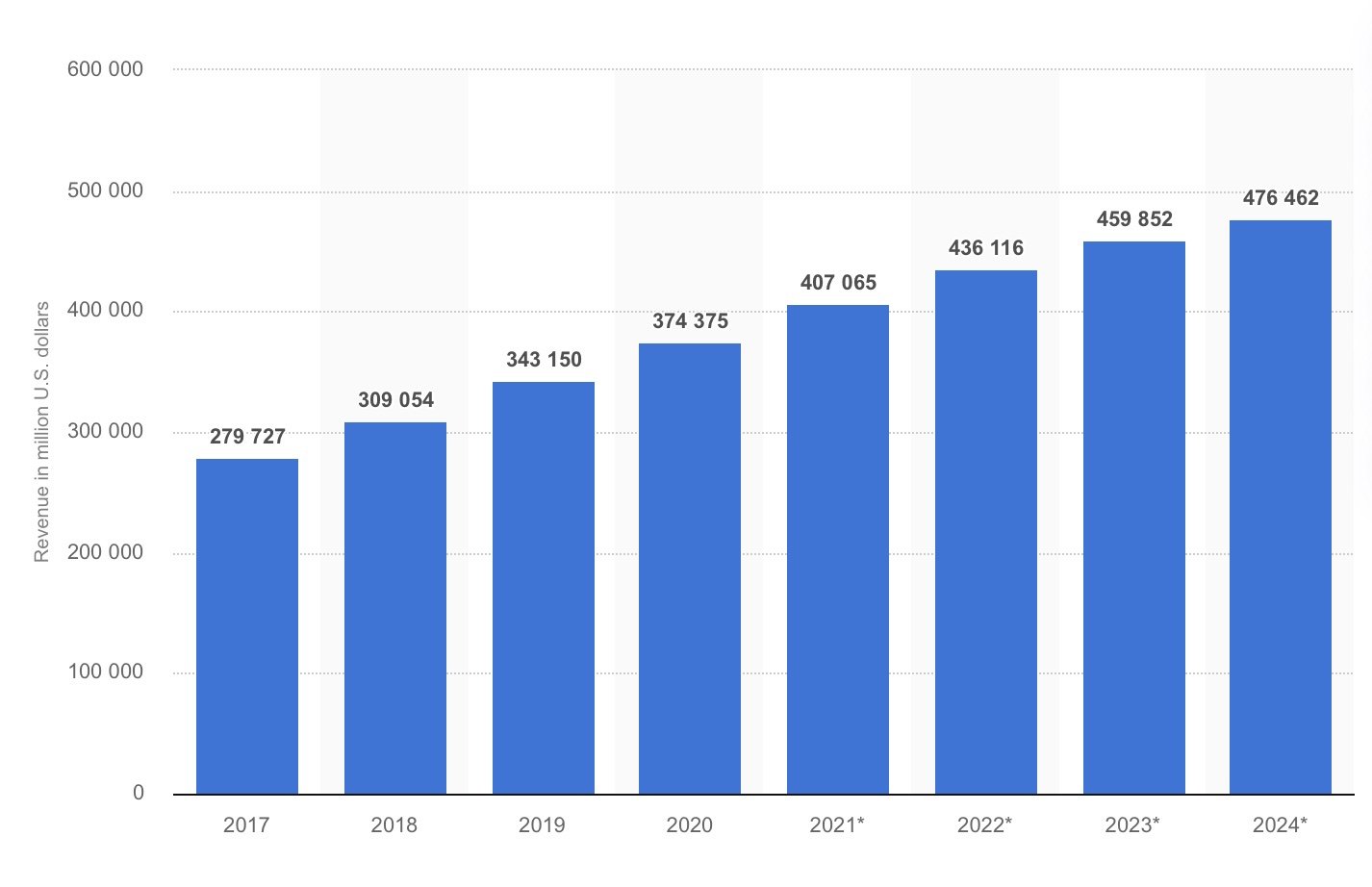
So, where can company’s build their in the next generation of ecommerce? What can a young company do to make inroads against the incumbent?
Let’s dig in.
Opportunities for growth
This is where we get to have some fun. There are some clear cut opportunities.
Mobile
Mobile first is more than just a battle cry from the mid 2010 web developers, it’s a unilateral focus for many startups and even large businesses.
For example, who actually uses Instagram on the web?
However, Instagram has recently added ecommerce features into the app, targeting mobile only users.
Shopify is clearly paying attention, per this well-placed ad.
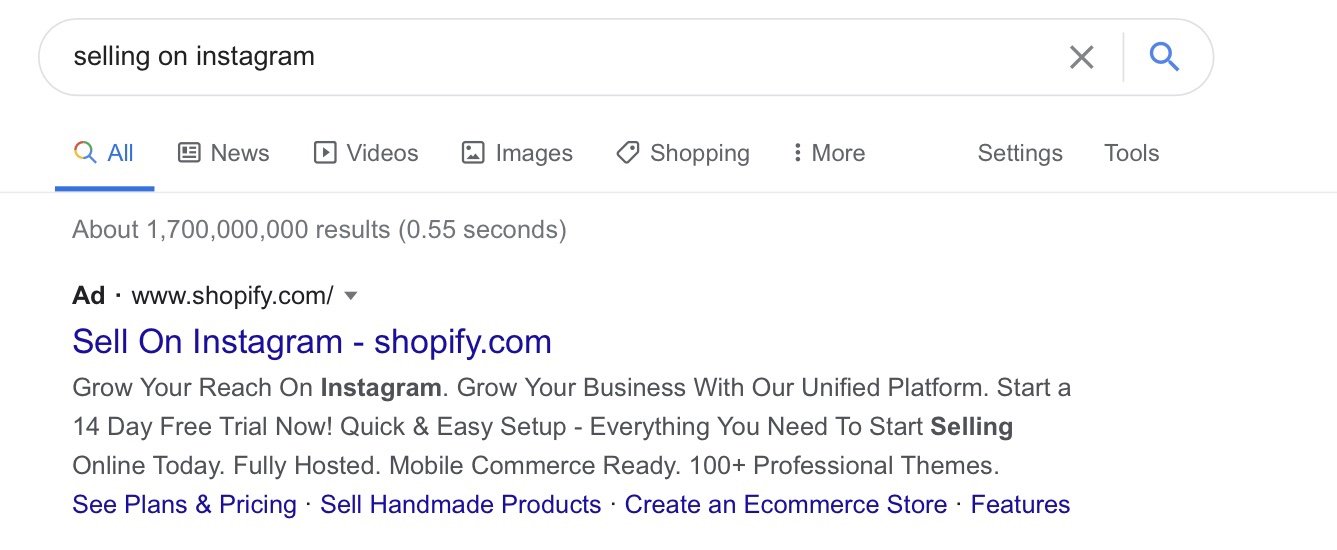
However, in typical Facebook style, the main reference for selling in Instagram is this inscrutable page of directions.
It’s awful.
This awfulness has given space to an entire ecosystem of platforms that make it easy to sell on mobile.
They are purely mobile-first, and sometimes mobile-only, experiences for selling physical products (or digital products) online.
One of my favorites is Universe, until recently only available on the iOS App Store.
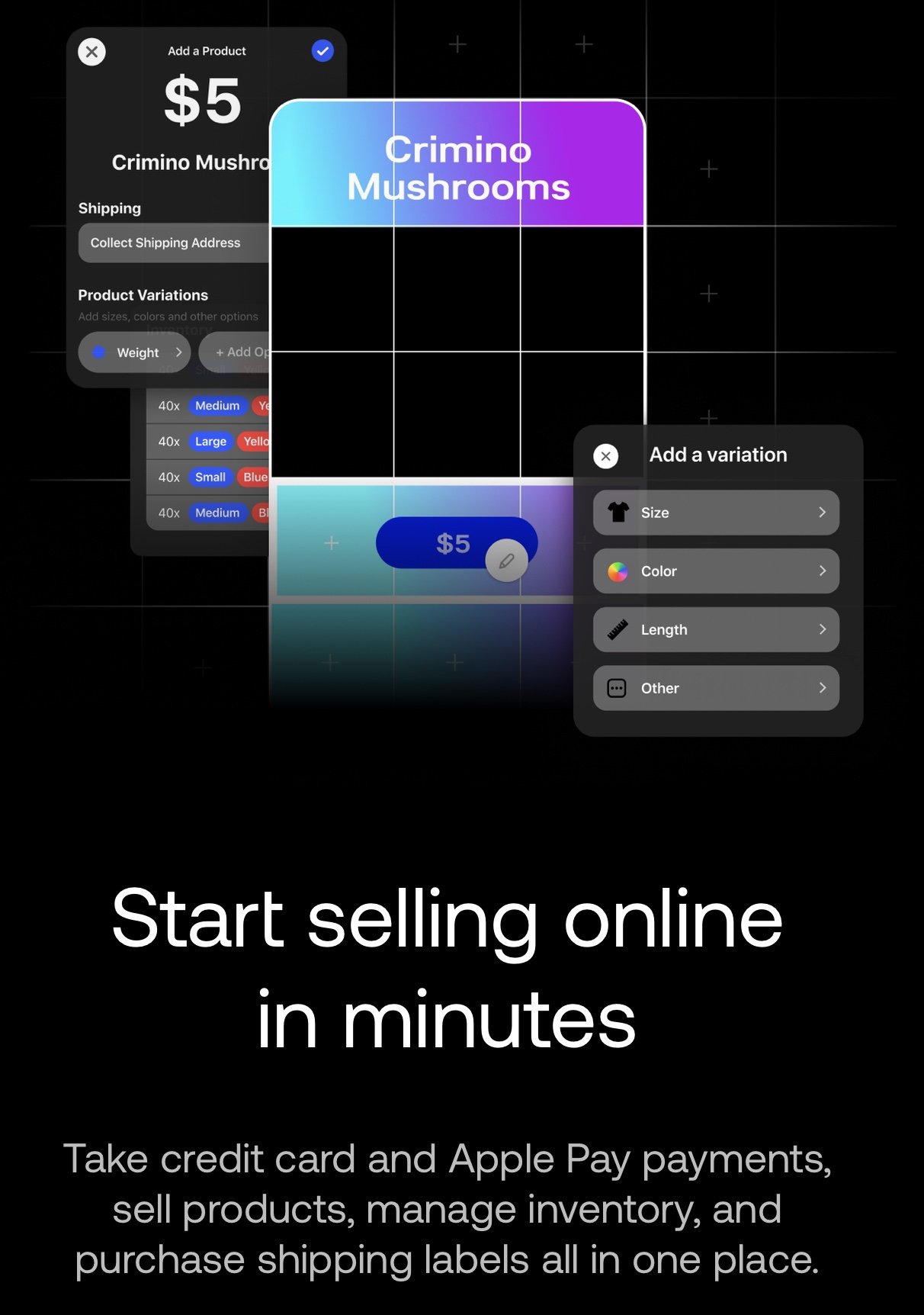
Universe let’s you do everything on a mobile device. You can set up your payment processor, build the site, list products, etc all from the app.
On the other side, Shopify now lets you edit products from the mobile app, which is definitely a start, but it’s nowhere near being able to compete with Universe on the ease to new store creation.
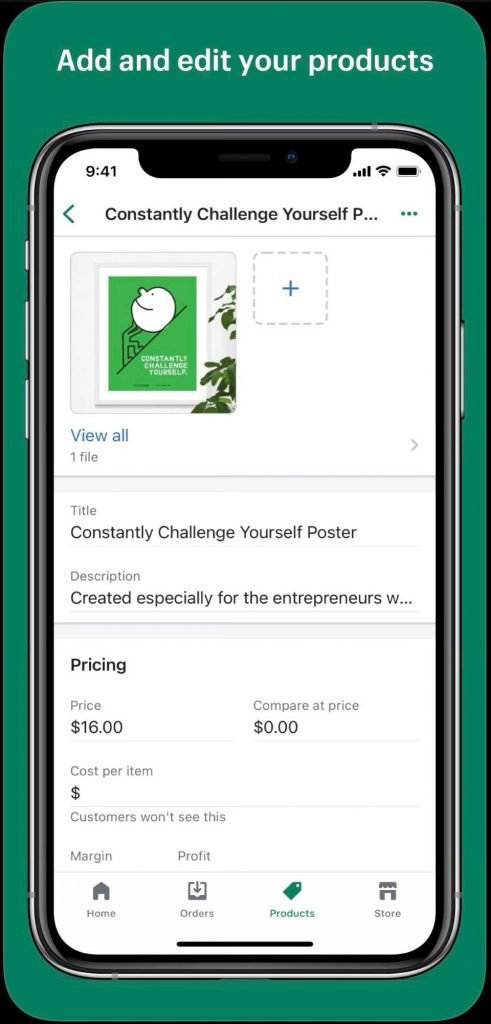
The UI also looks retrofitted to mobile as opposed to being created for a mobile device specifically.
Pricing
Shopify is expensive.
There’s the $29 base plan, plus the credit card processing rate of 2.9% + 30 cents on each transaction plus an additional 2% when not using Shopify Payments.
That’s also not including the add-ons that you might need, a theme, developer to modify the theme in Liquid etc.
Then there’s this pricing table. Tell me you don’t want to sell to Gen Z without actually telling me you don’t want to sell to Gen Z.
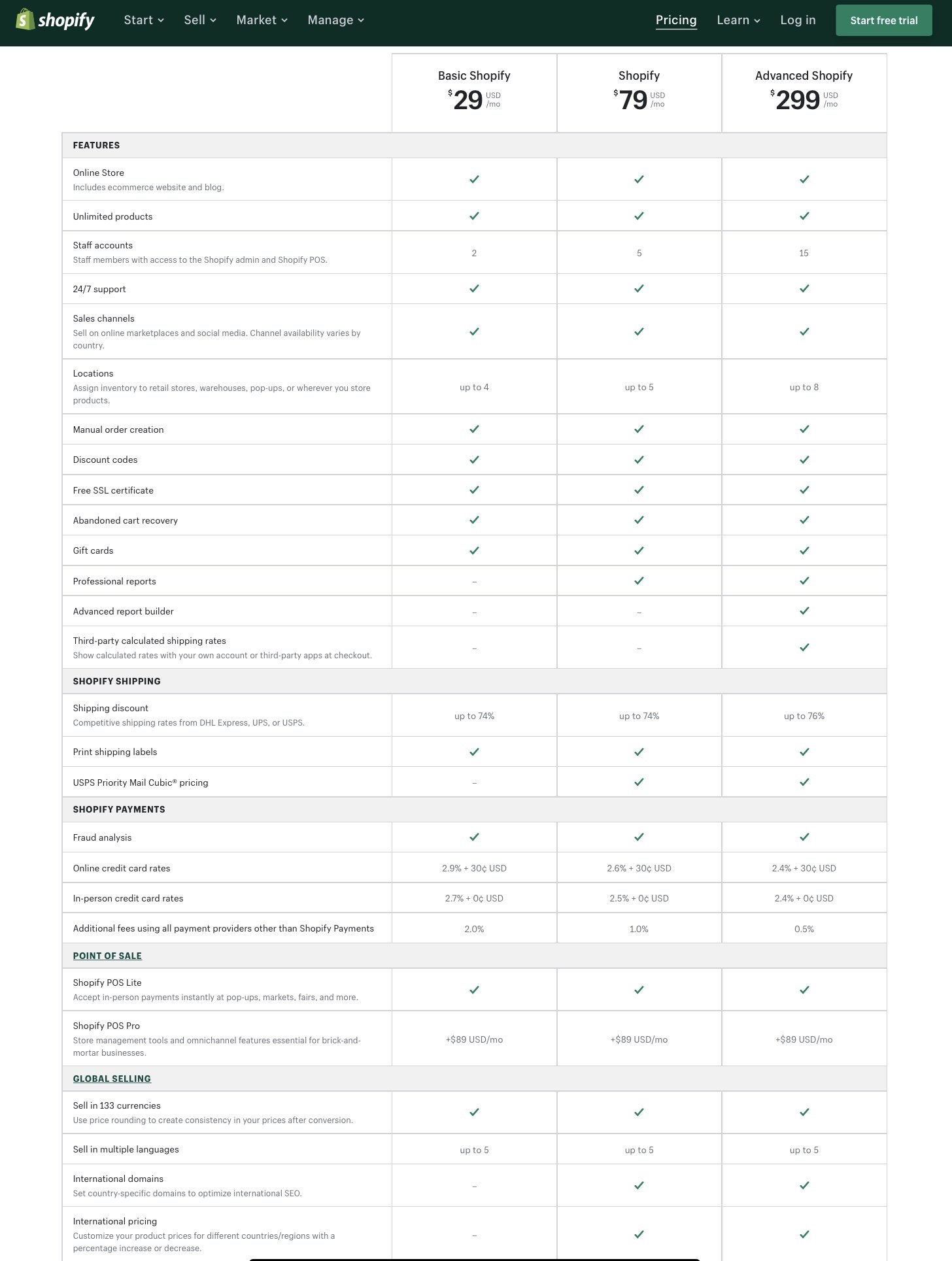
If you manage to make it to the bottom, you’ll see a small call out that they have a “Lite” plan available for $9.
As someone who has tried this plan, I can say without a doubt you should just skip it. It’s a watered down version of Shopify with upsells at every turn and support is unfamiliar with its features and limitations.
So, how can a startup do better? Well, removing the pricing decision is a good first step.
Freemium is clearly the move here.
Here are a few different pricing strategies where you could differentiate yourself:
- Cover costs of any merchant up to a certain amount of selling volume, then once they hit $500 in sales move them up to a reasonable paid tier.
- Don’t have any paid plans.
Charge an additional 2% on top of each transaction and let users build it into their product pricing.
Have a global toggle that says something like “adjust pricing to cover costs” and when toggled on, each product increases by 2%.
Then it feels like they never have to pay for anything. - Give users a $500 credit up front to be applied to cover credit card transaction fees and an additional $250 any time they refer someone that sets up a new store and makes their first sale.
Why wouldn’t you start your store with a free $500?
Individual Tool Templates
If I was starting an ecom selling platform today there’s no doubt in my mind that I would spin up a few different verticals with the least amount of barriers possible to selling.
What would that look like?
Sell a branded product in 1 step.
With no registration screen, you land in the app and type a phrase or upload a logo.
That phrase/logo is immediately placed on a variety of different merch (socks, mugs, shirts, ect) and you get a link to your store. That’s it.
Or take the path of Airbnb and ride on the coat tails of a greater network until you create your own.
For example, take a link from Etsy, eBay, Poshmark, etc. and generate a branded domain for them to sell on, minus the huge fees.
Scrape the products, pricing, text and the rest of the metadata and quickly allow people to set up their own branded stores from just a URL.
Once you have enough traction in one of those verticals, build out the rest of the ecosystem but continue to launch tools for different verticals to build backlinks, expand your reach and siphon off more users.
The Media Model
This is becoming a popular thing to tweet, but outside of fashion + booze brands pairing with artists, you don’t see a lot of it in the startup world.
So, how would you do it?
Find influencers not selling swag.
Set up a store for them using your homebrew platform, hire a designer to create some branded hoodies and socks, then send them a private link to the store.
Get on a call pitch your done-for-you influencer stores, give them .5% equity in your company in exchange for their public partnership, do that 10 more times, then go and become the linktree for selling influencer swag.
Get NFT’y With Me
Almost didn’t want to write this one, because well, NFT’s, but you have to at least acknowledge the opportunity.
In case you need it, here’s a quick explanation on NFT’s from the BBC:
NFTs are “one-of-a-kind” assets in the digital world that can be bought and sold like any other piece of property, but they have no tangible form of their own.
The digital tokens can be thought of as certificates of ownership for virtual or physical assets.
Via the BBC: What are NFTs and why are some worth millions?
Shopify is definitely not the right platform for selling digital goods and that goes double for things like NFT’s that need integrations with with different blockchains.
What so where’s the opportunity?
Reach out to creators today with a fully built out store featuring their goods as NFT’s. You don’t actually have to mint any yet.
Send over the link to the digital artist Beeple making $69 million on his NFT as proof of legitimacy. Offer to run the marketing campaign as well and only take a fee from the percentage of sales.
It’s a massive space, potentially one of the largest opportunities on the list if you believe in NFT’s, and is ripe for the taking.
Bonus: AI (yeah, I know)
Do you remember “The Grid”?
So much hype for this company.
They would put designers and developers out of business. The very pillars that hold up the internet would crumble etc.
The Grid was supposed to be an AI web building platform that took a few bits about your brand and generated an entire site for you.
Check out this vintage 2014 launch trailer from Sandwich.
Despite the trailer, the results were less than spectacular.
So where do we stand today? Well, Wix has something like it.

The reviews are generally pretty bad and usage in general seems low. Also, this might be the lowest TrustPilot score I’ve ever seen.
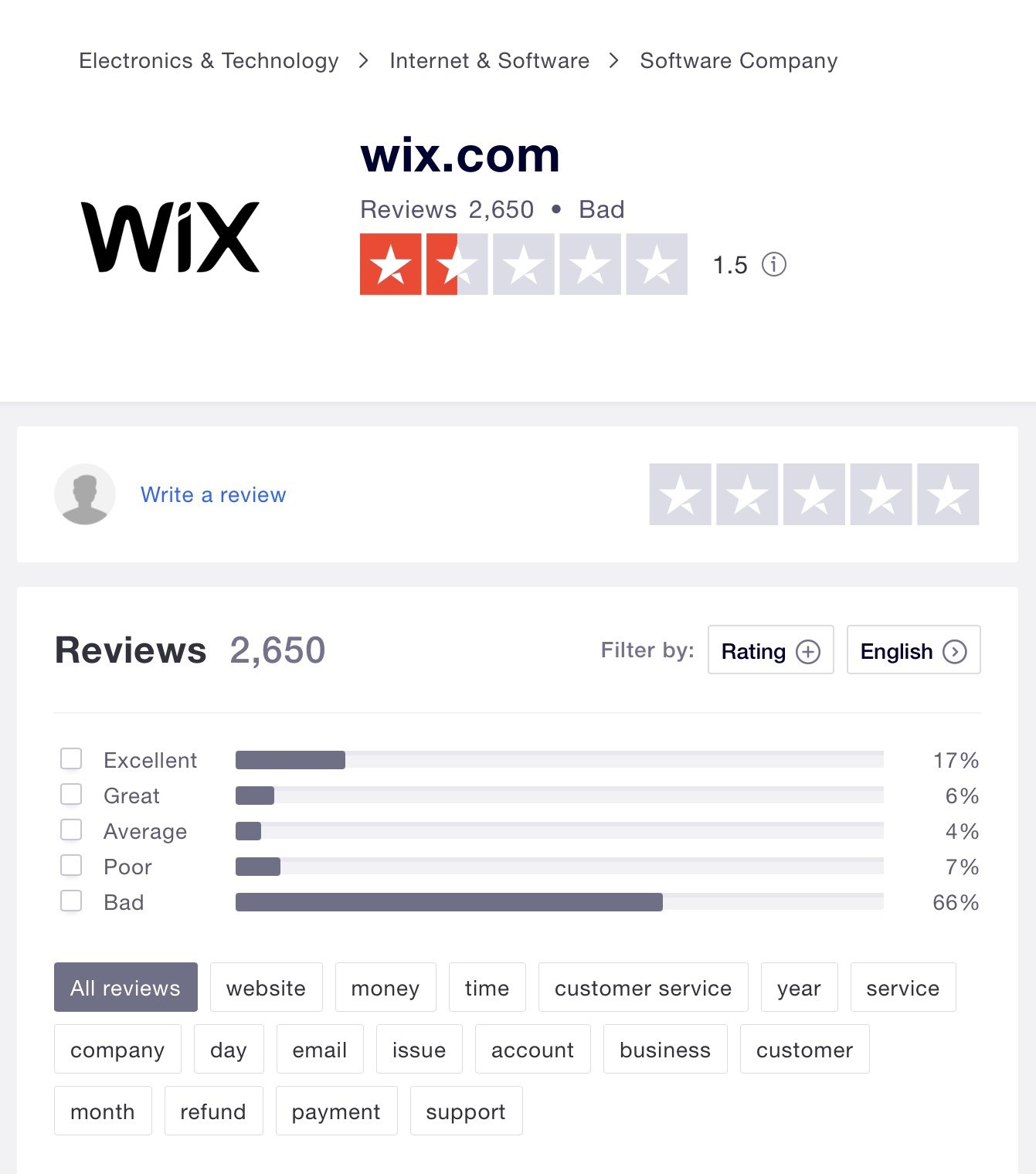
So what’s next?
Shopify has plenty of room for growth and won’t be going away any time soon, but it doesn’t mean there’s no room for someone to disrupt the incumbent.
The siren song of developing for e-commerce has sucked up devs into developing on platforms instead of creating their own, which makes sense as a safer bet.
The top developers on the Shopify App Store can makes millions just handling one small part of the e-commerce ecosystem and growing from an existing user base.
But it’s a giant TAM that needs to be addressed and is rapidly expanding, so opportunities abound for the motivated creator.
And Shopify is not without its gaps in the armor.
I’ll leave you with this review from the esteemed G2 Crowd.

If you liked this article, consider joining the newsletter to read more. I post every two weeks about SaaS, marketing and startups.
[mc4wp_form id=”197″]